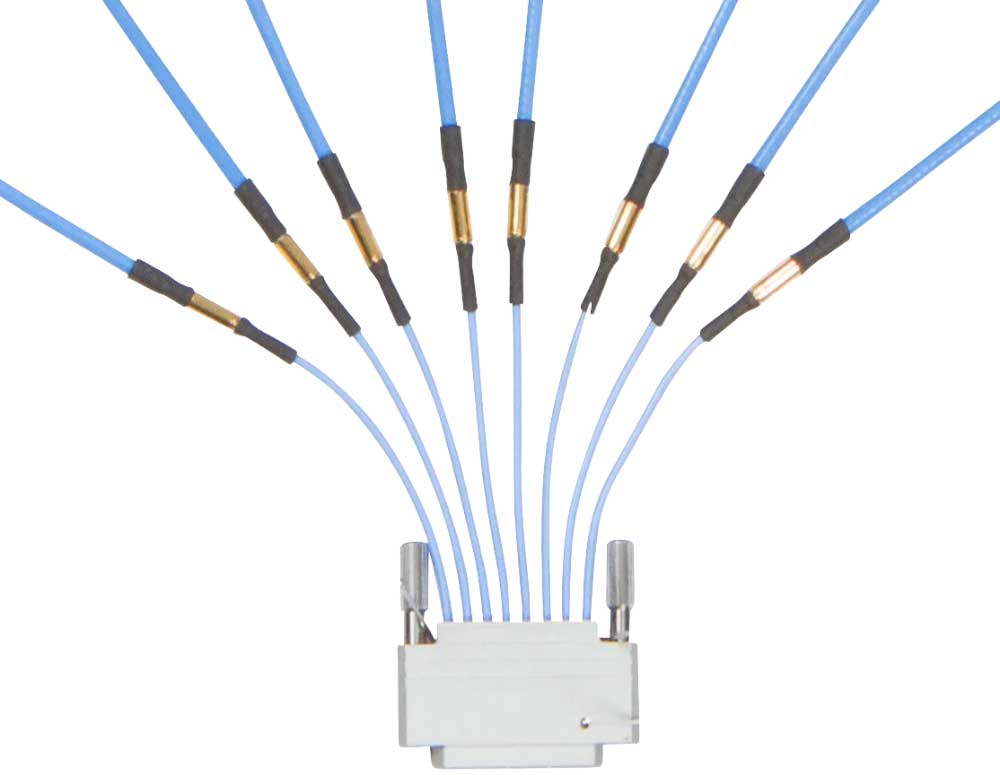The Tradeoff Revisited
Are you wrestling with the trade-off between flexible cables and low insertion loss in your RF designs? As frequencies climb and packaging gets tighter, the old dilemma persists: small-diameter cables offer flexibility but bleed signal strength, while larger cables preserve signals but won’t bend where you need them to. Traditionally, you’d stitch together two separate assemblies, adding interfaces that pile on complexity and risk. But why settle for that?
Meet ConvergeRF—a smarter way to design. This technology lets you blend the agility of a small-diameter cable with the efficiency of a larger one, all in a single assembly. No extra connectors. No compromises. Just a solution that fits your real-world challenges.
What is ConvergeRF?
ConvergeRF bridges the gap between cable types. It starts with a short run of flexible, small-diameter cable—like Ø.047″—for tight spaces, then transitions seamlessly to a larger, low-loss cable—like Ø.085″—for longer stretches. No additional interfaces are required. This hybrid approach keeps your signals intact while navigating the trickiest layouts.
Think of it as a custom-fit lifeline for your RF signals—flexible where it counts, efficient where it matters.
Why It’s a Win for Your Designs
Your priorities—performance, reliability, space, and cost—drive every decision. ConvergeRF delivers on all fronts:
Stronger Signals
Slash insertion loss by up to 40% compared to a standalone Ø.047″ cable. That’s cleaner, more reliable signals across frequencies up to 40 GHz.
Fewer Headaches
One assembly replaces multiple cables and connectors, cutting down failure points and simplifying your build.
Space-Saving Power
Route high-density bundles without choking performance, perfect for cramped chassis or compact modules.
Tailored Fit
Customize lengths to match your exact specs—no guesswork, no waste.
Where ConvergeRF Makes a Difference
This isn’t theoretical—it’s practical. Here’s where it shines:
VITA 67.3 Modules
Tight chassis routing demands flexibility. ConvergeRF uses Ø.047″ cable to snake through confined spaces, then shifts to Ø.085″ for longer runs, keeping signal loss low without extra hardware.
Mini-D RF Assemblies
These tiny connectors lean on Ø.047″ cables, but loss creeps in over distance. ConvergeRF steps up with a larger cable transition, trimming loss while keeping the design sleek.
M38999 Circular Connectors
High density insert arrangements on 38999 circular connectors can often dictate coaxial cable diameter selection. ConvergeRF allows for the initial length coming out of the mil-circular connector to be a smaller diameter before quickly transitioning to the larger cable for the balance of the cable assembly length.
It’s a fit anywhere tight routing meets the need for signal fidelity—think aerospace, defense, or telecom systems pushing the edge of density and frequency.
The Numbers Don’t Lie
Data backs it up. A 0-40 GHz insertion loss comparison pits ConvergeRF against standard Ø.047″ and Ø.085″ cables. The result? ConvergeRF cuts total loss by nearly 40% over the small-diameter option alone. That’s not just a spec—it’s a competitive edge.
Want to learn more?
Contact us at support@vitaleengineering.com for more details.
